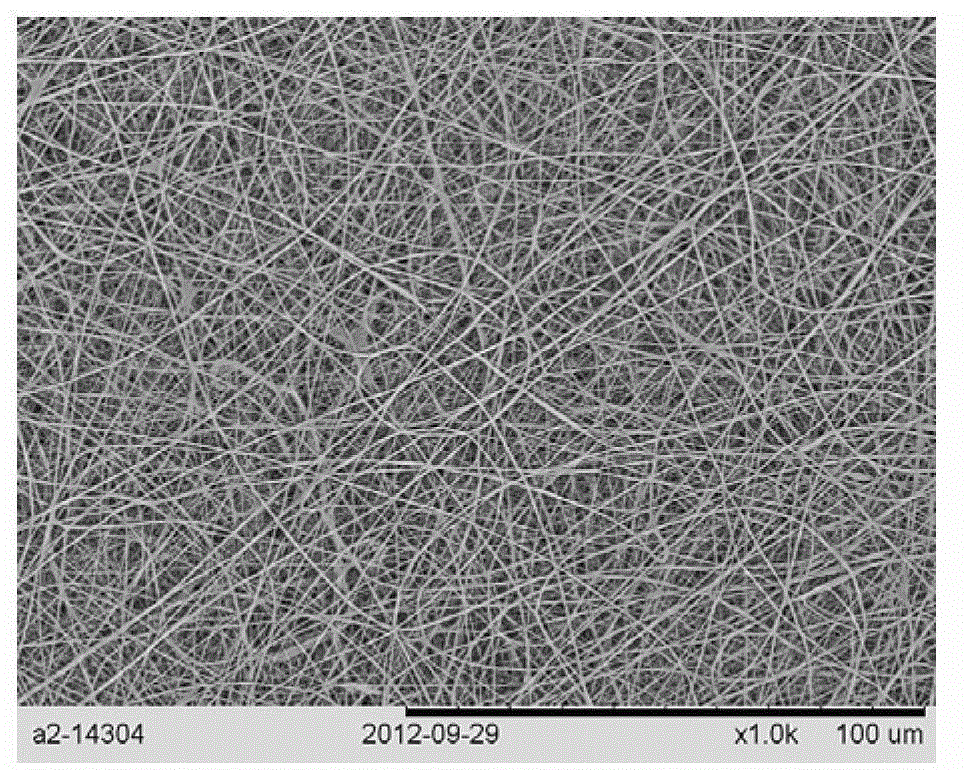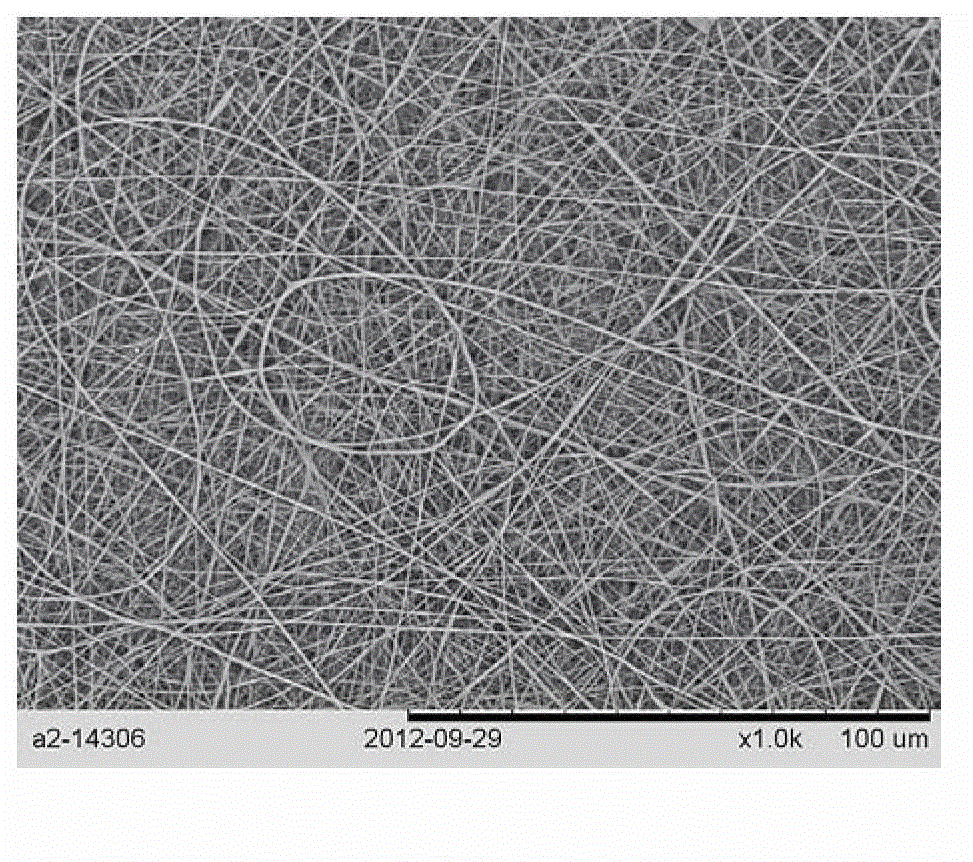Preparation method for protein-polyose-polylactic acid polycaprolactone vascular stent
A technology of polycaprolactone and vascular stents, which is applied in the field of preparation of tissue engineering vascular stents, and achieves the effects of simple and easy preparation methods, promotion of repair and regeneration, and wide application prospects
- Summary
- Abstract
- Description
- Claims
- Application Information
AI Technical Summary
Problems solved by technology
Method used
Image
Examples
Embodiment 1
[0029] Weigh 0.8g of collagen, chitosan and P(LLA-CL) with an electronic balance; dissolve 0.8g of collagen in 10ml hexafluoroisopropanol, and magnetically stir until completely dissolved; Dissolve chitosan in 10ml of hexafluoroisopropanol / trifluoroacetic acid (V / V, 9 / 1) mixed solvent, stir magnetically until completely dissolved; dissolve 0.8g of P(LLA-CL) in 10ml of hexafluoroisopropanol In propanol, magnetically stir until completely dissolved; after the three solutions are completely dissolved, take 2ml of collagen solution, 0.5ml of chitosan solution, and 7.5ml of P(LLA-CL) solution and mix them in a volume ratio of 20:5:75. Stir and mix evenly with magnetic force to obtain 10 ml of a mixed spinning solution with a total concentration of 8%, and the mass ratio of the solute collagen-chitosan-P(LLA-CL) is 20:5:75. Inhale the mixed solution into the syringe and control the advance speed of the micro-injection pump to be 1ml / h. Select a No. 7 stainless steel needle and conne...
Embodiment 2
[0031] Weigh 0.8g of collagen, chitosan and P(LLA-CL) with an electronic balance; dissolve 0.8g of collagen in 10ml hexafluoroisopropanol, and magnetically stir until completely dissolved; Dissolve chitosan in 10ml of hexafluoroisopropanol / trifluoroacetic acid (V / V, 9 / 1) mixed solvent, stir magnetically until completely dissolved; dissolve 0.8g of P(LLA-CL) in 10ml of hexafluoroisopropanol In propanol, magnetically stir until completely dissolved; after the three solutions are completely dissolved, take 4ml of collagen solution, 1ml of chitosan solution, and 5ml of P(LLA-CL) solution in a volume ratio of 40:10:50, and magnetically stir Mix evenly to obtain 10 ml of mixed spinning solution with a total concentration of 8%, and the mass ratio of solute collagen-chitosan-P(LLA-CL) is 40:10:50. Inhale the mixed solution into the syringe and control the advance speed of the micro-injection pump to be 1ml / h. Select a No. 7 stainless steel needle and connect it to a 14KV high voltage...
Embodiment 3
[0033]Weigh 0.8g of collagen, chitosan and P(LLA-CL) with an electronic balance; dissolve 0.8g of collagen in 10ml of hexafluoroisopropanol, and magnetically stir until completely dissolved; Dissolve chitosan in 10ml of hexafluoroisopropanol / trifluoroacetic acid (V / V, 9 / 1) mixed solvent, and magnetically stir until completely dissolved; dissolve 0.8g of P(LLA-CL) in 10ml of hexafluoroisopropanol In propanol, magnetically stir until completely dissolved; after the three solutions are completely dissolved, take 6ml of collagen solution, 1.5ml of chitosan solution, and 2.5ml of P(LLA-CL) solution and mix them in a volume ratio of 60:15:25. Magnetic stirring and mixing were performed uniformly to obtain 10 ml of a mixed spinning solution with a total concentration of 8%, and the mass ratio of the solute collagen-chitosan-P(LLA-CL) was 60:15:25. Inhale the mixed solution into the syringe and control the advance speed of the micro-injection pump to be 1ml / h. Select a No. 7 stainless...
PUM
| Property | Measurement | Unit |
|---|---|---|
| length | aaaaa | aaaaa |
Abstract
Description
Claims
Application Information
 Login to View More
Login to View More - R&D
- Intellectual Property
- Life Sciences
- Materials
- Tech Scout
- Unparalleled Data Quality
- Higher Quality Content
- 60% Fewer Hallucinations
Browse by: Latest US Patents, China's latest patents, Technical Efficacy Thesaurus, Application Domain, Technology Topic, Popular Technical Reports.
© 2025 PatSnap. All rights reserved.Legal|Privacy policy|Modern Slavery Act Transparency Statement|Sitemap|About US| Contact US: help@patsnap.com



